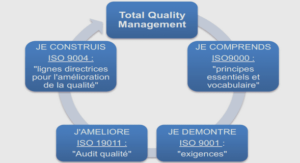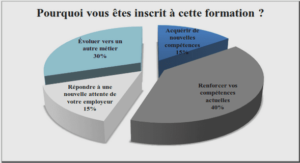A CONTRASTIVE STUDY OF PRONOUNS:
PERSONAL, POSSESSIVE AND INTERROGATIVE
MORPHOLOGY OF PERSONAL PRONOUNS IN ENGLISH AND PULAAR
When you study the morphology of something, you study its structure. For instance, biologists study the morphology of plants. Geologists study the morphology of rocks. Linguists study the morphology of words. Moreover, that is why Cristal defined it as the study of the structure of words. It studies how people build up their words, and what job the different parts of a word perform. This chapter of our work will let us discover more about the morphology of pronouns as far as English and Pulaar are concerned. In English, the form of some pronouns like the personal pronouns varies according to case, number, gender and person. The personal pronouns can be divided into three categories
SUBJECT PRONOUNS
Subject pronouns is the form of personal pronouns when they are the subject of a verb or of a predicate nominative. A predicate nominative is a Noun Phrase (NP) that occurs in a predicate and refers back to the subject of a sentence. The subject personal pronouns can be represented in the following table:Part from the third person singular, subject personal pronouns do not make distinction in gender that is to say that all genders (masculine, feminine) and neuter) can be expressed in “I”, “you”,” we” and they. However the third person singular distinguishes three genders: masculine “he”, feminine “she” and neuter “it”. Examples: 1- She was an exceptional and gifted human being (feminine) 2- He wishes he could fly (masculine) 3- It will never happen (neuter) The subject personal pronoun in the second person singular and the second person plural have the same form which is “you”. Subject personal pronouns can’t be split into smaller meaningful units meaning that they are composed of only one morpheme. Example: 4- “So early in my life , I came to understand that America is not just the indispensable nation , you are the irrepressible nation.” Here, “you” and “I” cannot be segmented in smaller meaningful units. In the imperative mood, subject personal pronouns are generally elliptical in other words they are not represented by any form (ᴓ form). The position usually occupied by the subject is empty. Example: 5- ᴓ Download these files S V DO However, we can use the subject “you” when it contrast with another person in the imperative. Examples: 6 – I’ll sit on this chair. You find a seat. 7- You can also make an order emphatic or even aggressive. 8- You be careful what you’re saying 19 When personal pronouns play the role of a complement that is to say “an element of a clause which typically follows the verb “be” and which consists either of an adjective phrase (AP) or a noun phrase (NP)”, they are called predicate nominative because , though they occur in objective case, they keep the form of subject personal pronouns. Example: 9- The administrators of this website are you and I S V C In this example though the personal pronoun “you” and “I” occur in the predicate, they are in nominative form. In Pulaar, there are four types of personal pronouns that function as subject element in a sentence structure. We have singular subject pronoun, the plural subject pronouns, the object pronouns and the independent pronouns. Some of subject pronouns are of two syllabi whereas the others subject pronouns are of a one syllabi. For example, our Pulaar dialect has the following sets: the subject pronouns, the object pronouns and the independent pronouns. The subject pronouns are pronouns which can stand only for one person or thing. Pulaar has seven (7) subject pronoun; three (3) in singular and (4) in plural. The singular ones are: mi (I), a (you) and o (he/she). They are monomorphic and theirs position are always in the subject position. Examples: 10- mi coodi nagge PER.1SG buy beef I have bought a caw 11- a wari foondu ndu PER.2SG kill bird NCL You have killed the pigeon 12- o totti miin kaalis PER.3sg give PRO money He /she has given me money 20 Plural subject pronouns in Pulaar are: -men (exclusive) ‘we’, -en (inclusive) ‘we’, -on (you) and -ɓe (they). Like the singular ones, the plural also cannot be divided into a meaningful units and theirs use are alike the singular ones. They are always in the subject position. Examples: 13- men (exclusive) njahat -aa jeere PER.1PL go NEG market We will not go to the market. 14- en (inclusive) fiyat gujjo oo PER.1PL hit thief ART We will hit the thief. 15- on salmin -aama PER.2PL greet Past You are greeted. 16- ɓe rokk -aama teewu PER give PST meat They are offered a meat The first plural person has two kinds of pronouns, the first one is exclusive (that is to say the person we are talking to is not included on the pronoun ‘we’). Example: 17- men njahii. PER.1PL go We have gone The second one is inclusive (that is to say the person we are talking to is included on the pronoun ‘we’). Example: 18- en njahataa, PER.1PL not go we will not go.
THE BIMORPHEMIC SUBJECT PRONOUNS
English language may has also a bimorphemic pronouns but what is sure is that the most of English personal pronouns are monomorphic meaning that they are formed only by one single morpheme. In Pulaar, some personal pronouns are bimorphemic meaning that they are formed of two syllables. The most of the time they are formed by addition of two monomorphic pronouns and they are found to all person. Every part of these subject pronoun can be meaningful. For instance if we take the case of the 2 nd and 3rd person singular “aɗa”(you) and “omo”(he), the first is composed with “-a” subject which means (you) and “-ɗa” subject which can means also (you). The second one “omo” is made with “-o”( subject) which means (he) and “-mo”(object) which means also( he). It’s 23 going to be the same if we take the example of the 2nd person plural: -oɗon (you). Here, the “- oɗon” pronoun is made with “-o” which means (he) in singular and “ɗon”(you) object pronoun which means (you) singular. We can use them as follow: 28- eɓen arta ladde PER.3PL return bush They are coming back to the bush 29- oɗon yaawi koyɗe PER.2PL fast feet You walk very fast The following table will tell us more about the long personal pronouns
THE INDEPENDENT PERSONAL PRONOUNS
In English, the independent personal pronouns correspond to the possessive pronouns: mine, ours, yours, his, hers, its, and theirs. These pronouns are called independent genitive pronouns (also called strong or Absolut possessive pronouns) Carter (1998). Examples: 52- My phone is dead. Pass me yours. 53- Did you know that Labrador is mine? 54- The house on the corner is theirs. As we can see, it is common to see independent possessive pronouns at the ends of clauses or phrases. These independent pronouns are morphologically derived from the possessive pronouns or possessive determiners: my, our, your, his, her, its, and their as the following table shows us. Table07: genitive of independent pronouns.:
DEDICATION |



